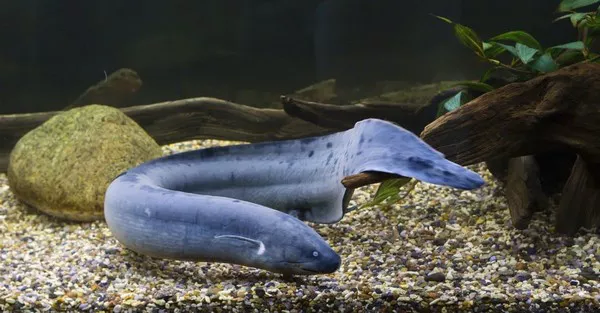The Australian Lungfish (Neoceratodus forsteri) is a unique and ancient species of freshwater fish found only in Queensland, Australia. This species is considered to be one of the oldest living vertebrates in the world, with a fossil record dating back over 100 million years. However, due to various threats, including habitat loss, pollution, and overfishing, the population of Australian Lungfish has declined significantly over the years, leading to concerns about their future survival. In this article, we will explore the current status of Australian Lungfish and the efforts being made to protect this endangered species.
Current Population Status of Australian Lungfish
According to the International Union for Conservation of Nature (IUCN), the Australian Lungfish is currently classified as a vulnerable species. This means that the species is at high risk of extinction in the wild, with an estimated population decline of at least 30% over the past 10 years. The IUCN Red List of Threatened Species also states that the population of Australian Lungfish is decreasing due to habitat degradation, overfishing, and competition with introduced species.
The exact number of Australian Lungfish left in the wild is unknown, but it is believed to be fewer than 10,000 individuals. This is a significant decline from the historical population size, which is thought to have been much larger before European settlement.
Threats to the Australian Lungfish
The Australian lungfish faces a number of threats to its survival, both natural and human-induced. One of the biggest threats to the species is habitat loss and degradation, as a result of dam construction, river regulation, and land-use changes such as agriculture and urbanization. These activities can alter water flows and temperatures, reduce water quality, and remove or degrade important spawning and feeding habitats for the lungfish.
Other threats to the Australian lungfish include fishing, predation by introduced species such as European carp, and disease. Additionally, the species has a low reproductive rate and a long lifespan, which makes it particularly vulnerable to overexploitation and population declines.
Efforts to Protect Australian Lungfish
Various efforts are being made to protect the Australian Lungfish and prevent its extinction. Some of these efforts include:
- Habitat Restoration: One of the main threats to the Australian Lungfish is habitat loss and degradation. Therefore, efforts are being made to restore and protect the habitats that the species depends on, including rivers, streams, and wetlands.
- Fishing Restrictions: The Australian Lungfish is a protected species in Australia, and fishing is heavily regulated. It is illegal to catch or possess the species without a permit, and there are strict guidelines in place to ensure that fishing practices do not harm the population.
- Education and Awareness: Raising awareness about the importance of the Australian Lungfish and its endangered status is crucial for its protection. Educating the public about the species and its habitat needs can help to reduce the threats that it faces.
- Research and Monitoring: Monitoring the population of Australian Lungfish is important for understanding its status and identifying threats. Researchers are studying the species to learn more about its biology, behavior, and ecology, which can inform conservation efforts.
The Australian Lungfish is an ancient and unique species that is currently at risk of extinction. The population of this species has declined significantly over the years due to various threats, including habitat loss and overfishing. However, efforts are being made to protect and conserve the species, including habitat restoration, fishing restrictions, education and awareness, and research and monitoring. It is crucial to continue these efforts to ensure the survival of this important species for future generations.
Recommended reading:


























